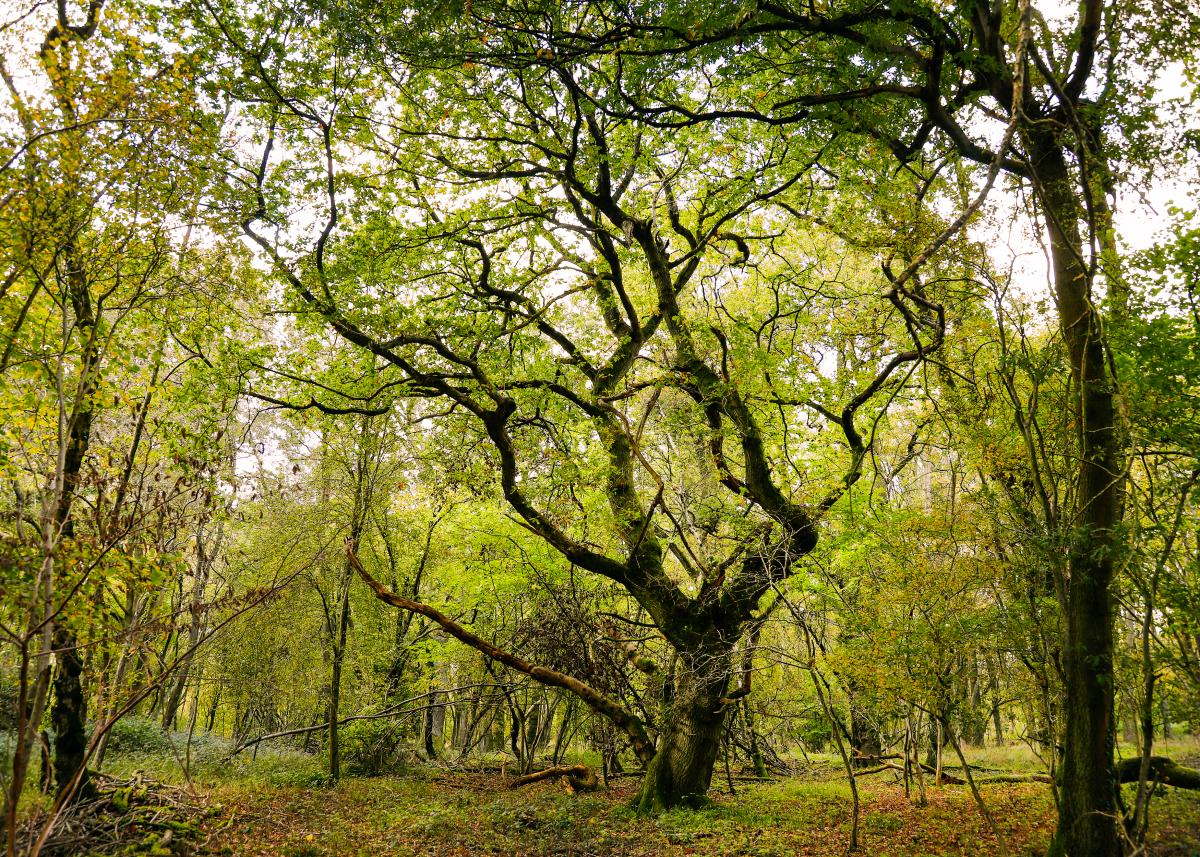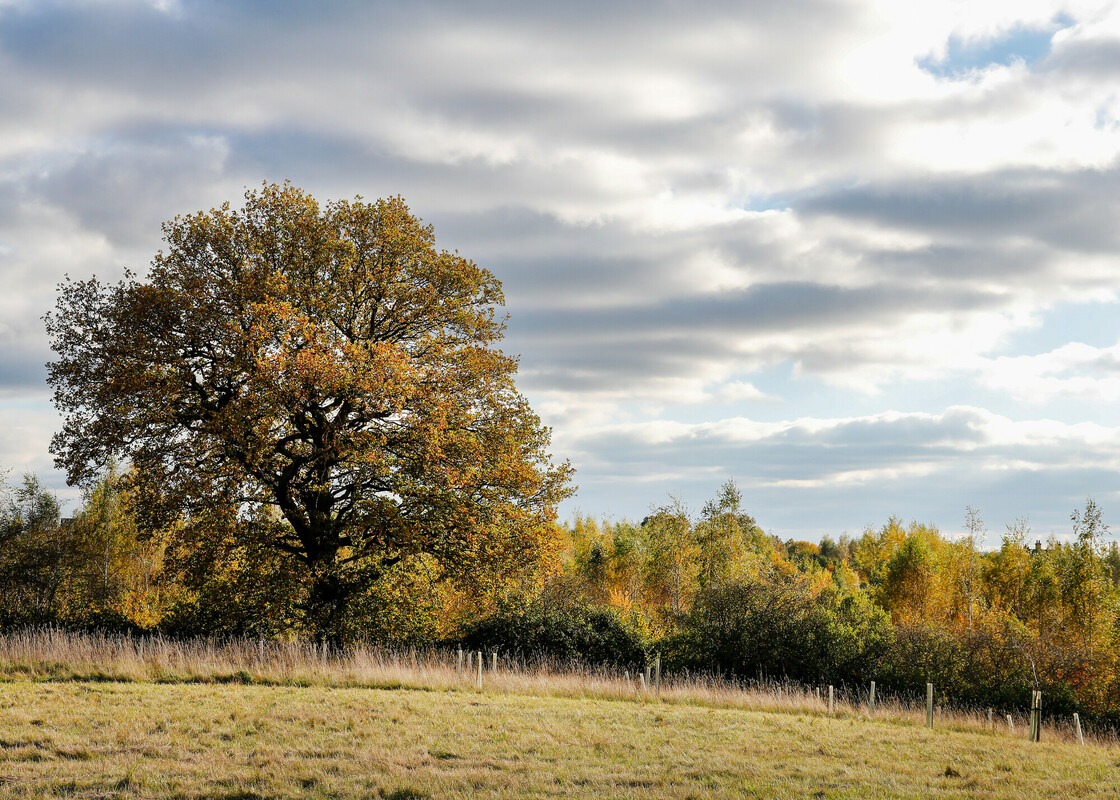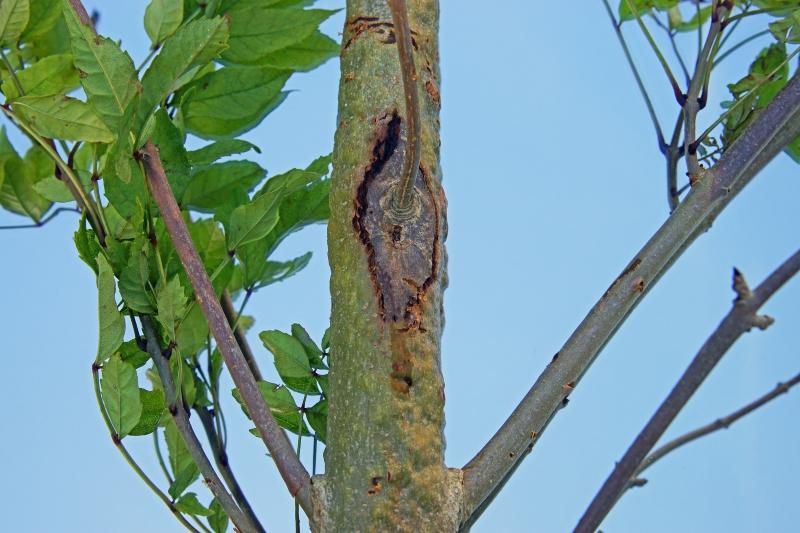
Protecting plant health in the Forest
One of the biggest challenges we face managing the Forest is the ever-growing threat from pests and diseases. This National Plant Health Week, we are highlighting some of the threats to plant health in the Forest and how we’re working to create resilient woodlands.
The importance of plant health
2020 is the International Year of Plant Health, an opportunity to raise global awareness on the importance of protecting plant health, promoting responsible practices that reduce the spread of plant pests, and scientific innovation to address pest threats.
Over the past 30 years there has been an increase in new diseases and pest species due to the import of timber, poor biosecurity and rising temperatures caused by climate change. Tackling present and future threats is essential for the health of our trees and woodlands.
Acute Oak Decline affecting our native oaks
Acute oak decline (AOD) is a disease that affects our native oak species, the English oak and sessile oak, with trees showing signs of decline caused by many abiotic (non-living) and biotic (living) factors.
Some of the oak trees that have AOD can show signs of recovery from the disease, but some do eventually die.
One of the most telling signs of AOD is stem bleeding, where dark fluid seeps from vertical weeping fissures in the bark. These bleeds are a sign of tissue decay which form lesions under the living tissue.
Abiotic and biotic factors causing oak decline
Abiotic factors affecting our oak trees are the summer-long drought in 2018, and flooding in 2019 and early 2020. The effects of the drought can be seen throughout the established and ancient woodland and the mature trees along our hedgerows, through the increased dieback within their crowns, commonly known as the tree being ‘stag headed’. This is a sign of stress around the root area and can be caused by the tree not having enough water available for it to use.
We still don’t know exactly how the trees will react to the saturated ground and standing water caused by the increased rainfall and flooding, but we have already started experiencing trees falling over in the most recent winds. This is because the root plate has slipped due to the surrounding soil being too wet to give any anchoring support to the roots.
A common biotic factor associated with AOD is a buprestid beetle called Agrilus biguttatus. This beetle lays its eggs in small crevices within the bark of oak trees that are in decline due to stress. Once hatched, the larvae of the buprestid beetle tunnel through the outer bark and into the inner bark and cambium where they feed on the nutrients available from the vascular system. When the larvae have reached maturity, they pupate back in the outer bark, before emerging through a ‘D’ shaped exit hole.

Tackling threats with Action Oak partnership
The Heart of England Forest is part of the Action Oak partnership which was set up to tackle future and present threats facing our native oak species. These threats include AOD, Xylella fastidiosa and the oak processionary moth (which, although currently confined to London and its surrounding boroughs, could spread nationally). The partnership is made up of leading forestry and arboricultural organisations working with owners and managers of oak trees and woodlands to share ideas, knowledge and research to tackle these threats.
This year our interns will begin a project mapping all the oak trees within the Forest that are showing signs of AOD. This will enable us to monitor and better understand the health of our trees and woodlands.
Ash dieback
As a keystone species in the UK, ash trees provide a habitat for almost 1,000 other organisms, with over 100 of these species either completely or highly dependent on the tree for their survival.
Unfortunately, ash dieback is a disease that is now widely spread throughout the Forest and most of the UK. This is evident by the dieback of the leaf tips which turn a dark purple/brown and then black in colour, along with diamond-shaped dark lesions located on the side of the stem of the dead shoots.
Ash dieback is spread by spores of the fruiting body being distributed by the wind. It is thought that the spores can travel for many kilometres, making controlling the spread impossible.

Grey Squirrels
The grey squirrel is a non-native pest species that has resided within our woodlands for the past 100 years. They gnaw at bark leaving wounds open for the colonisation of pests and diseases. The damage can often be bad enough to cause complete ring barking, which destroys the vascular system that is needed to carry water and nutrients around the tree. This ring barking will lead to the eventual death of the limb or branch, and can cause it to snap out in high winds or other extreme weather events.
Grey squirrel damage can be seen in Giddings Wood, where some of the trees that have been ring barked or had large areas of bark removed by grey squirrels have lost up to half of their crown from wind damage.
Looking to the future with resilient woods
Within our new woodland creation we have added sycamore into our planting mix to add more diversity to our woodlands. We currently plant 30 different native trees and shrubs, allowing us to ensure resilience within our new woodlands. We are also conducting tree health surveys throughout the forest and monitoring our current pests and diseases.
With the potential problems we may encounter from pests, diseases and climate change, we will continue to future-proof our forest to ensure it is here for generations to come.



